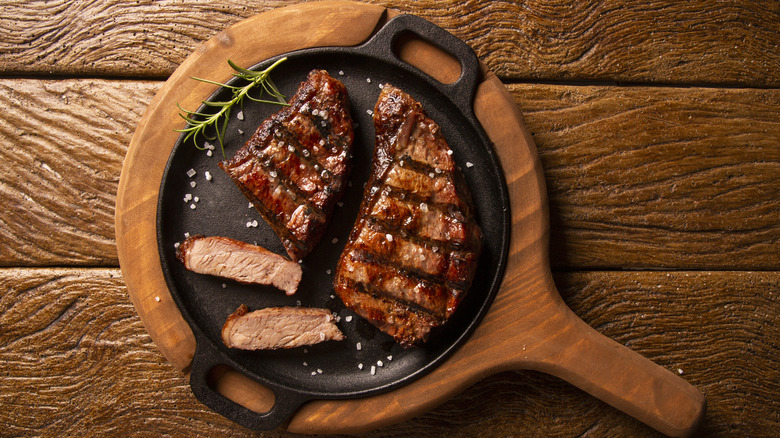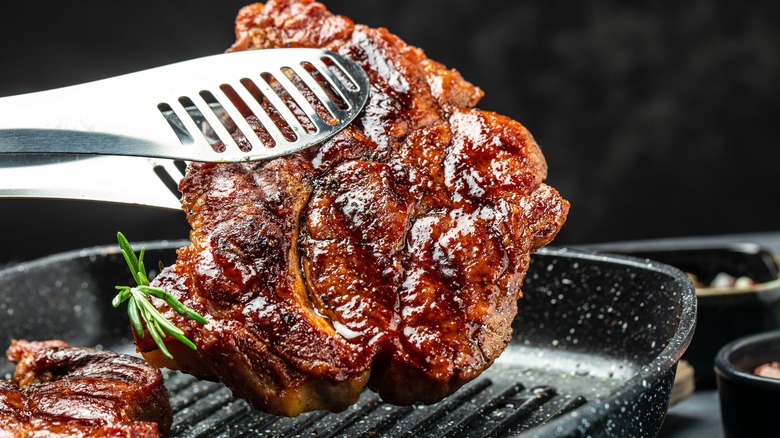The charred, smoky flavor that materializes from grilling meat outdoors is almost unbeatable. But when a few rain showers sweep through, you run out of charcoal or propane, or you’re simply trying to grill without a backyard, it may appear as if your plans for charred meat are dashed. Thankfully, not all hope is lost — one expert, Max Greb of Max the Meat Guy, relies on liquid smoke to give meat a smoky flavor when grilling indoors.
While you may think that only an outdoor charcoal grill could produce the type of depth beloved in grilled meat, liquid smoke completely changes that. In the late 1800s, pharmacist Ernest H. Wright figured out that when smoke hits cold air it condenses, thus he discovered liquid smoke. The highly concentrated and tasty additive provides a shortcut to charred, delicious meat. And for Max the Meat Guy, one thing that’s for sure is you should always have liquid smoke in your pantry.
“Liquid smoke can be a great way to mimic smoky flavor. Simply add a few drops to a steak and rub it in as a binder, [then] season,” says Greb who recommends McCormick’s All Purpose Seasoning for the second part of the job. But he warns that the liquid smoke is extremely potent and should be used sparingly. You can start with ½ teaspoon of liquid smoke for every 5 pounds of meat, or dilute it with water or vinegar. For a richer flavor, marinate your meat for at least an hour.
Other ways to achieve a smoky flavor when grilling indoors

Liquid smoke is made from the smoke of burnt wood chips that’s been condensed into a liquid. While bottled liquid smoke is meant to be filtered for carcinogenic pathogens, rendering it safe to consume, you can’t always ensure the quality of cheaper bottles. Because it may contain additives and artificial flavoring, or be distilled too quickly to properly expel chemicals, the product tends to be a little controversial.
There are alternatives you can turn to if you’re uneasy about the risk of liquid smoke. “If smoky flair is desired when cooking indoors, there are other great ways to do so that can taste more natural,” explains Greb. “Try incorporating smoked chipotle peppers in adobo to a marinade, or add some smoked paprika to [your rub] for a little extra smokiness.”
While you have the taste part down, the texture is arguably as important. Therefore, when grilling indoors, cast-iron cookware is your best friend. The ridged texture brands meat with grill marks while the constant high temperatures provide a similar sizzle to what’s normally given off by the grill.







